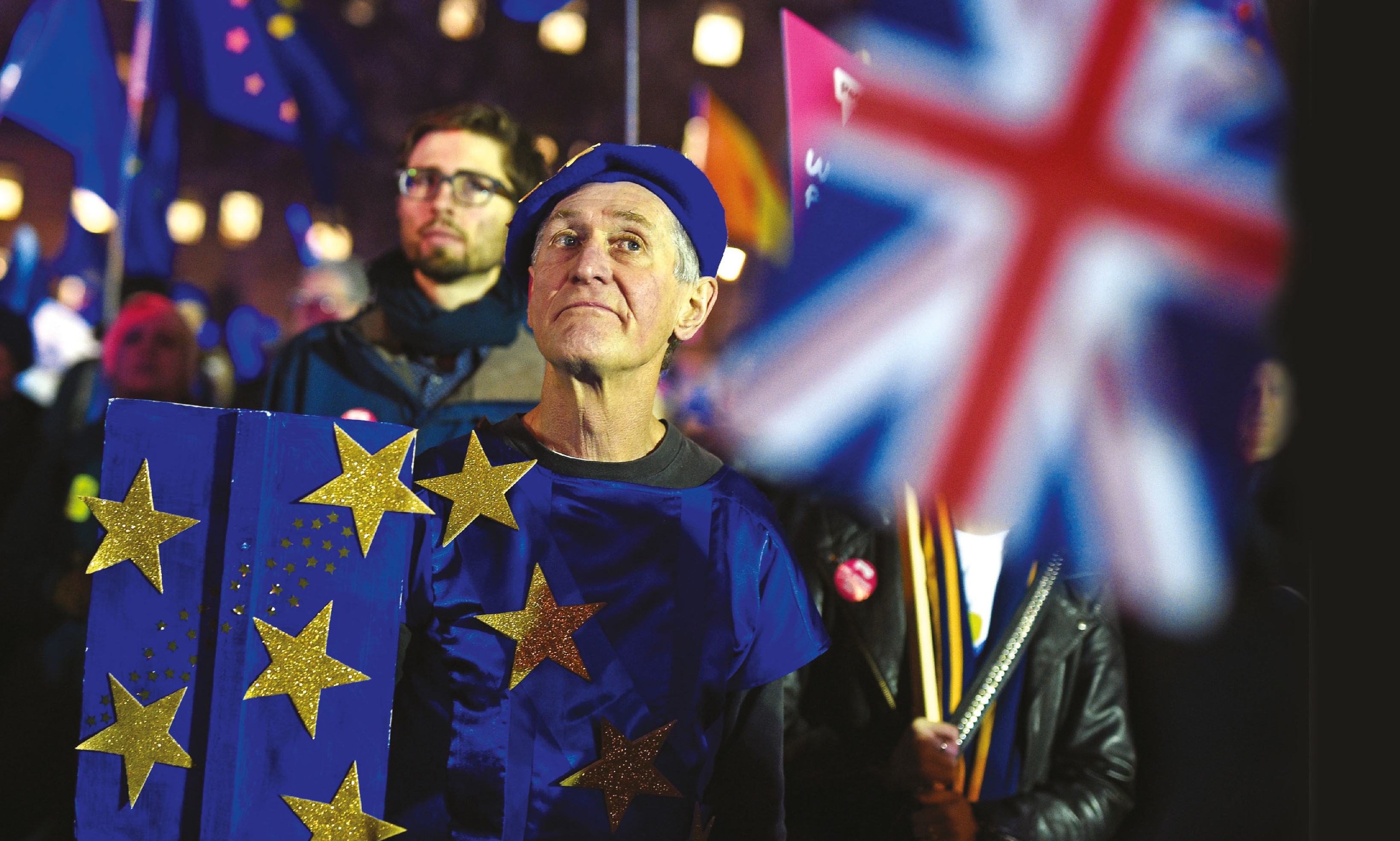BREXIT ON EDGE
BRITAIN’S EXIT CONUNDRUM
Saro Thiruppathy rounds up the status of Brexit and the furore over the withdrawal agreement
To say that Brexit is confusing is an understatement. So if you’re bemused about the turn of events, take comfort in the knowledge that you aren’t alone. In January, British Prime Minister Theresa May’s proposals for the withdrawal agreement, which sets out the terms of Britain’s exit from the EU on 29 March, were brutally shot down in the House of Commons when it voted 432-202.
Even many of her allies voted against the proposed withdrawal agreement, making May’s defeat by 230 votes the biggest on government policy for almost a century.
STUMBLING BLOCKS So what’s the brouhaha about? Many British lawmakers refused to agree to the terms of the withdrawal agreement that allows for a transition period to work out future relations between Britain and the EU.
They were also against the backstop provision, which the EU says is integral to the withdrawal agreement and carries no expiration date.
The issue with the transition period is that the UK would have to remain within the customs union and single market until a mutually agreeable relationship is reached before the cutoff date at the end of next year. The EU has expressed a willingness to extend this period if the need arises.
IRISH BARRIERS To appreciate the need for the Irish backstop, it’s necessary to understand the history of Northern Ireland. The ‘Troubles’ (as they are known) between the Republicans and Loyalists (those loyal to the British Crown) started in the 1920s when Northern Ireland was partitioned under the Government of Ireland Act 1920. As a result of internecine conflict between Catholic Republicans and Protestant Loyalists, Northern Ireland came under direct rule by the UK in March 1972.
Between the 1970s and ’90s, fighting between armed groups in Northern Ireland left hundreds dead and thousands wounded. Eventually, in a desperate bid to halt the violence, the UK and Irish governments signed the Good Friday Agreement in 1998 and devolved power to Northern Ireland.
Ireland became a republic in 1949 and ended its tenuous membership of the British Commonwealth. It joined the European Communities (EC) in 1973.
BACKSTOP DILEMMA The backstop provision was included at the insistence of the Irish government, which doesn’t want a border between Northern Ireland and the rest of the island in the event of a ‘no deal’ Brexit.
Ireland has legitimate fears that any kind of physical border would be a slippery slope to fractured relations once more. So in order to ensure a seamless flow of goods and services between Northern Ireland and the Irish Republic, the former would need to come under EU customs union and single market regulations.
The backstop is unacceptable to many British lawmakers because of fears that Northern Ireland, which is a part of Britain, will be ruled by a different set of customs and market regulations to those which operate in the UK.
Furthermore, they’re also unwilling to allow Britain to remain in the customs union and single market until the end of the transition period of 21 months while future relations with the EU are being deliberated.
If a ‘no deal’ Brexit takes place on 29 March, the UK will trade under the laws of the WTO.
So in a nutshell, the EU is adamant that it will not reopen discussions on the withdrawal agreement; British lawmakers are demanding that Theresa May renegotiates the terms of the agreement to suit a wide variety of demands – most importantly, the backstop provision; and May is adamant that Brexit will occur on 29 March with or without a deal.
The EU has indicated that it is willing to extend the March deadline by a few months in order to give May a chance to win over her parliamentary colleagues.
POSSIBLE SOLUTIONS In spite of its official stance on the backstop provision, there’s speculation that the EU is trying to work out a compromise behind the scenes with the Irish government on its ‘no border’ position. If a compromise is reached and the border issue is resolved, then Brexit will not be as contentious as it is at the time of writing.
Another solution to the crisis would be to seek a second opinion from the British voters on whether to leave the EU or remain. At the time of voting in June 2016, the British public wasn’t aware of the ramifications of leaving the EU. Pro-Brexit politicians had promised pots of money at the end of a mythical rainbow and then thrown immigration – the perennial bogey – in the ring for good measure.
At the time, Brits were unaware that the settlement the UK would have to pay the EU upon leaving would be close to UK£ 40 billion. Now they also know that their government is still unprepared for going solo. So it’s possible that the ‘leave’ vote was mostly cast in ignorance and based on emotion rather than facts.
If the UK decides to scrap Brexit, it can do so unilaterally; but if it requires an extension to the 29 March deadline, EU members will need to vote on it.
For a once mighty kingdom where it was famously claimed that ‘the sun never set on the British Empire,’ the Brexit crisis has left the UK in a sad and lonely position with regard to Europe, in a quandary regarding Northern Ireland and bemused in the arena of global trade.
As the world watches this erstwhile giant unravel, some detractors in its former colonies might even say that karma is indeed a bitch!








Karma for sure! Now Brexit is up in the air!
Looks like the UK is as bad as Sri Lanka!
Agree with S. De Silva! It is actually worse because they cannot make up their mind about Brexit!